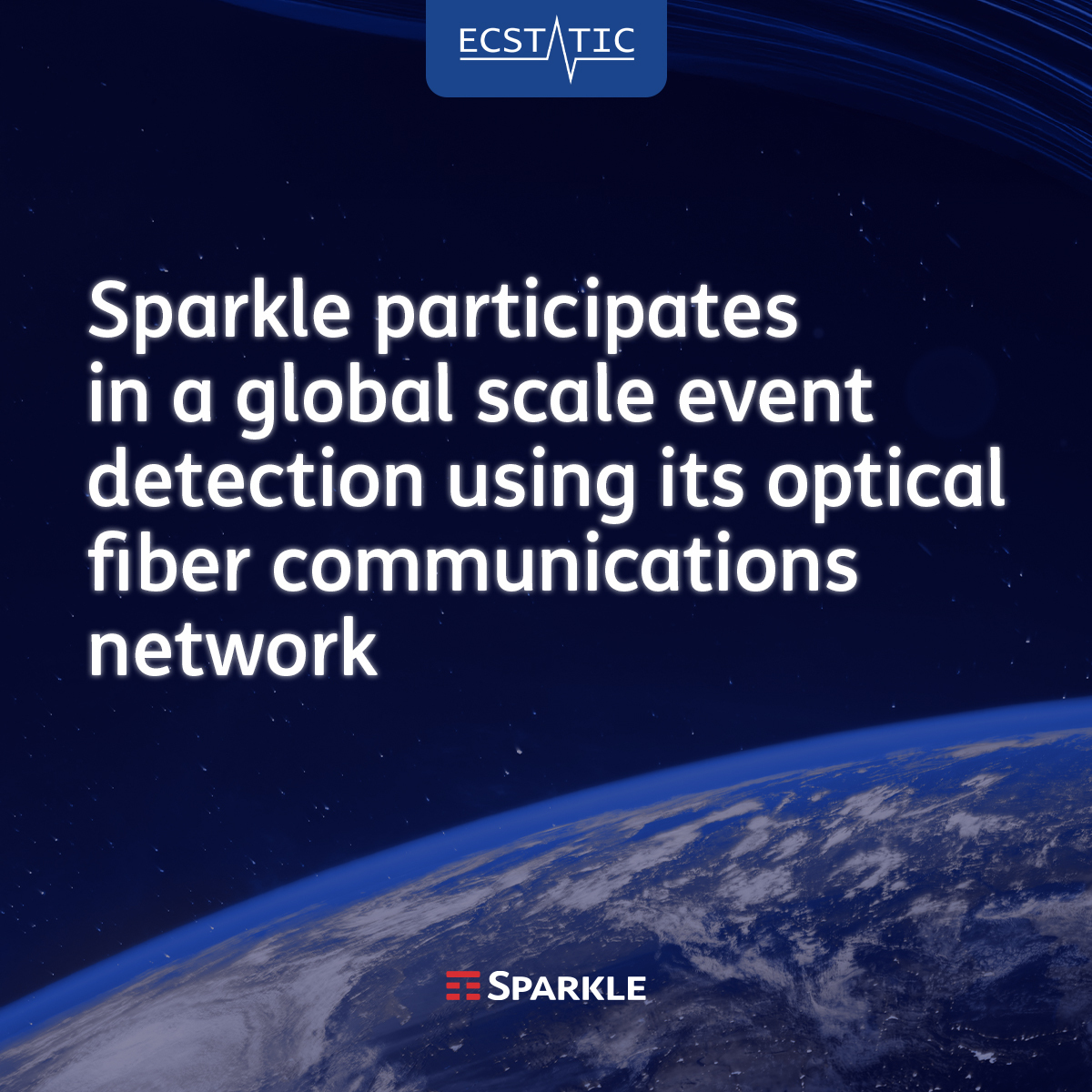Sparkle participates in a global scale event detection using its optical fiber communications network
In the framework of the EU-funded ECSTATIC project, Sparkle is proud to have contributed to the recent result of detecting the Kamchatka earthquake using Sparkle’s Mediterranean submarine optical fiber network, demonstrating the extraordinary potential of existing communications networks to serve as global sensing systems.

This result was achieved through a pioneering collaboration between Sparkle, the University of L'Aquila, the University of Padova, and Nokia Germany. The research team utilized Sparkle's submarine link equipped with commercial Nokia transponders to detect seismic events in the Sea of Okhotsk. What makes this achievement particularly significant is that the technology requires no dedicated sensing equipment or specialized fibers. Instead, it leverages post-processing of existing telemetry data from operational networks, ensuring zero impact on service quality or security.
During this observation, clear resonance patterns in the data have been registered starting from approximately 20 days before the Kamchatka earthquake occurred and geophysical researchers have been already involved in scientifically investigating if a potential precursor event of the earthquake has been detected.
This fundamental case study was presented at ECOC 2025, Europe's leading conference in optical communications, by prof. Antonio Mecozzi of the University of L'Aquila and has been published in Optica Open: "Observation of Precursor of the Kamchatka Earthquake by Monitoring an Optical Fiber Link in the Mediterranean Sea".
The detection of these distant seismic events at over 9,000 kilometers represents a powerful demonstration of how the submarine cable network could function as a planetary-scale sensor system. As the global fiber optic communications network continues to expand, its potential applications in environmental monitoring, disaster prevention, and scientific research grow exponentially.
"This experiment highlights the dual-use potential of Sparkle's extensive fiber optic infrastructure," said Danilo Decaroli, Head of Operations at Sparkle and member of the research team with Alberto Marullo, Subsea Cables Engineer at Sparkle. "Our network doesn't just connect people and businesses worldwide: it can also contribute to scientific advancement and public safety."
Sparkle remains committed to supporting innovative research that expands the value and impact of telecommunications infrastructure beyond traditional connectivity, contributing to a safer and more connected world.
